South Korean soju is finally getting the attention of the world thanks to the meteoric rise in popularity of Korean culture. The country is known for their heavy drinking culture, and you can observe aspects of it in popular variety shows and K-dramas.
Moreover, a popular local concoction called the “soju bomb” is also famous for its impactful impression. Whether you're an adventurous drinker or simply curious about Korean culture, trying soju is an experience worth embarking upon.
In this article we explore the rich history of soju, the most popular soju brands in Korea & internationally, plus the best foods to pair with soju.
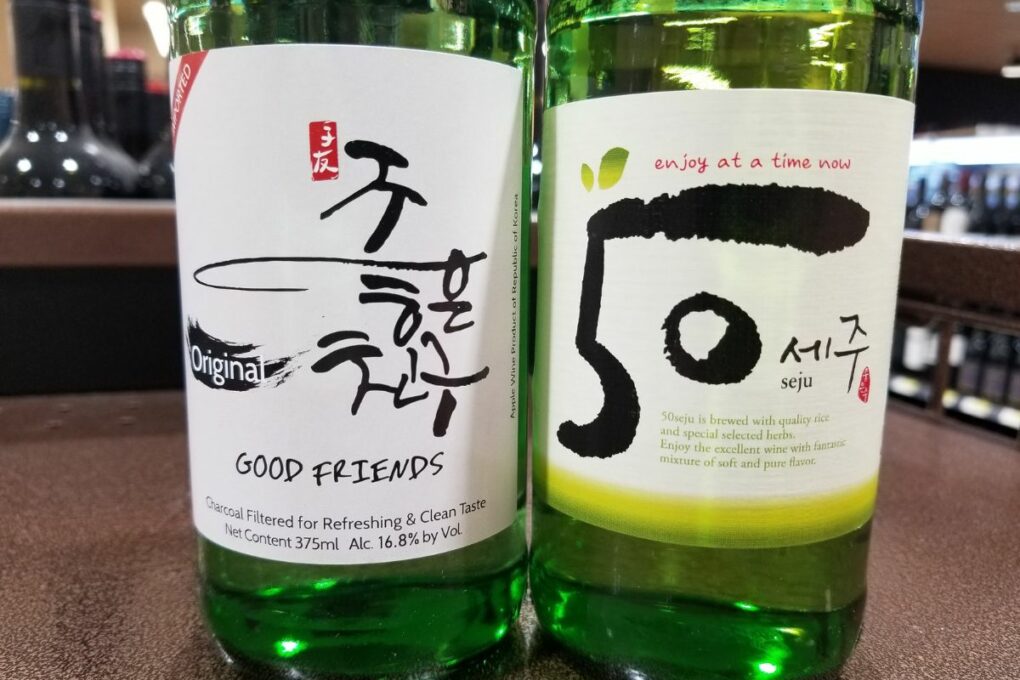
Jump To
Understanding Soju: Taste Profiles
What is Soju Made From
“Soju” is said to stem from the Chinese words “shao jiu” which translates to “burned liquor,” because of the process used to distill it.
Traditional soju fermentation methods used rice and nuruk (crushed wheat used as a fermentation starter), but there are other variants that were made with wheat, barley, tapioca, and sweet potato - starch-heavy ingredients that are considered cheap and readily available.
It takes about 15 days to complete the distillation of this Korean rice wine, because it undergoes a long process of boiling the filtered and matured rice inside a cauldron called a sojut gori. Today’s soju produced in large-scale factories has a similar but much more large-scale process.
After fermentation, factory-made soju is distilled and eventually diluted with water and other ingredients to achieve a weaker alcohol content, between 17% to 20%. This range is also the preference of most locals, because reducing soju’s kick results in a smooth, clear flavor that goes well with Korean food.
Soju was introduced to Korea when the Yuan Mongolian army attacked Andong (somewhere along the North Gyeongsang Province) during the Goryeo Dynasty (918-1392). While invading, they also shared how they distilled arak (their regional liquor) with the locals and set up distilleries in Gaegyeong.
Gaegyeong was the former capital of Korea back when North and South were unified (See Taebong Kingdom). Initially, soju was exclusively enjoyed by members of the Korean royal family, but gradually spread to the common folk.

Flavors and Aromas
Now that you know the history of Korea’s favorite drink, you may also be curious about its flavor. Soju's versatility and low price point (about $5-7 USD a bottle outside Korea) makes it an excellent addition to any drink collection.
It can be enjoyed neat, paired with traditional Korean dishes, or used as a base for cocktails to create a unique and unforgettable taste. Soju's rising popularity has also led to the development of different flavors and styles, some of them regional & only sold in Korea, in order to cater to every preference.
The original soju is the ‘plain’ flavor, and it’s still by far the most common type sold in convenience stores and restaurants. It tastes a bit like a milder version of vodka, and its light consistency and fresh flavor makes it perfect for mixing in cocktails.
Other popular brands of soju feature a wide range of infused fruit flavors like green grapes, peach, and strawberry. These flavors can also make your somaek taste unique and refreshing, especially if you experiment with different kinds of lager-based maekju (beer).
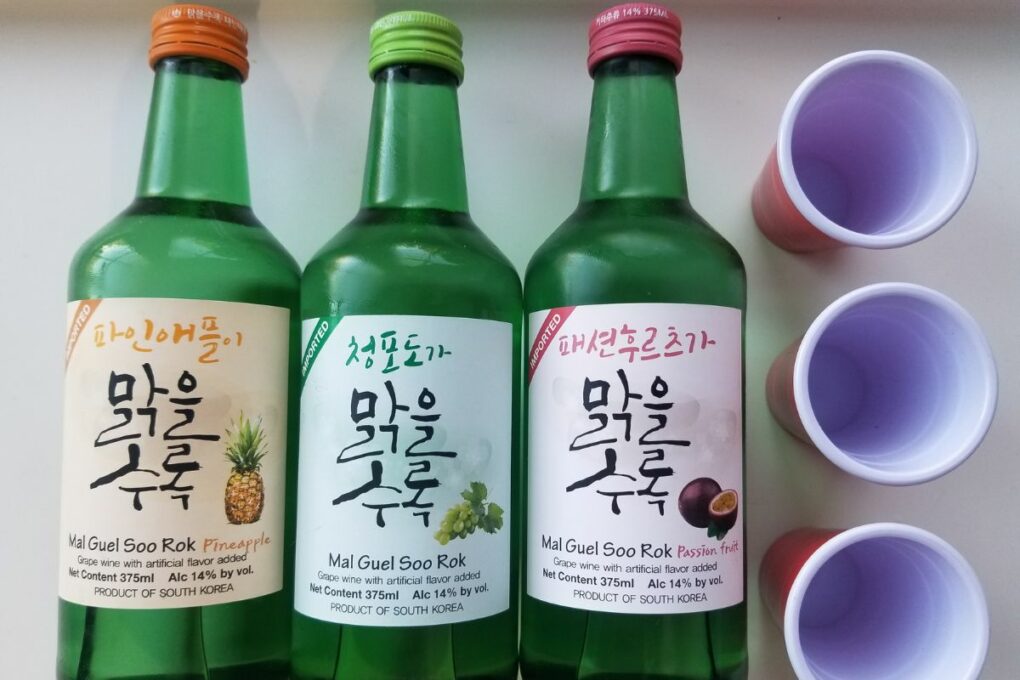
Alcohol Content
The strongest South Korean soju you can find currently is traditionally handcrafted by Myeongin Andong, which is a home-brewed liquor that has about 45% ABV. While this may pack quite a punch for the inexperienced (you will definitely get drunk very quickly), this spirit’s taste will definitely make the experience memorable.
Those who’ve tried it say that it tastes really sour, but its sweet aftertaste makes up for it. It’s also made following a careful method of fermenting the rice in natural bedrock water past the highlands of Andong for 40 days and aged for 100 days.
The traditional method used rice to make soju, which created liquor that had an ABV of 35%. But during the period of rice shortage in 1965, the South Korean government prohibited using rice to stockpile the resource, so soju was made from sweet potatoes and tapioca, with added flavorings, sweeteners, and water.
This reduced the ABV to 30%, and it kept getting lower as the years went by. Now, the ABV for common soju in the famous green bottles are less than 20%, because generally Korean people intend to converse and get-to-know as they gradually get drunk (it’s no fun to get drunk straightaway, because it defeats the point of being with people).
ABV for fruit-infused soju is slightly lower than the classic one, in part to make it safer for the younger crowd that prefers it (it goes down easy & fast).
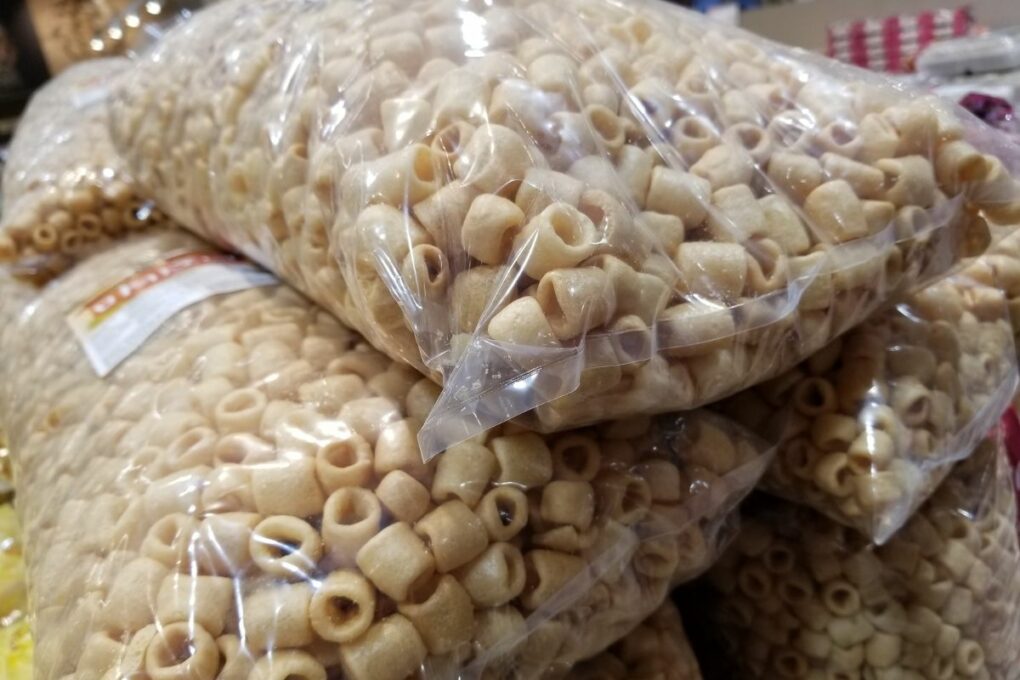
Pairing Soju with Food
This popular South Korean spirit is known for its versatility and unique but mild taste, making it a favorite to pair with various dishes.
Now this is something that people confuse a lot, so I’m going to set the record straight. When you refer to food that accompanies liquor (in other words, the soju is the star of the show), it is called “anju.” In Korea the act of eating and drinking simultaneously is called “banju.”
Popular Korean Dishes
Soju has been deeply ingrained in Korean culture to the point that most dishes are made to complement their favorite drink. Here are some popular anju that exceptionally go well with soju:
Korean Fried Chicken (후라이드 치킨)
Korean Fried Chicken always tastes amazing with soju - especially if you get the kind that’s crispy and super spicy from 60계 치킨!
If you’re not a fan of spicy chicken, try the huge and savory ones from food carts in a marketplace. You may need sauce to add a bit of flavor, but there’s always a store nearby selling a range of traditional Korean sauces.
Kimchi (김치)
A dinner spread in Korea wouldn’t feel right without this ban chan. Also known as Korea’s representative dish, kimchi is a spicy mix of vegetables (traditionally napa cabbage) that are spiced and then fermented for weeks before eating.
The result is a crisp, flavorful side that wakes up your taste buds. Wash the kimchi spiciness away with soju, and it leaves a satisfying aftertaste.
Tteokbokki (떡볶이)
Another famous Korean delicacy, these rice cakes are known for being soft and chewy. While they’re usually submerged in a gochujang-based red sauce (that definitely worries people who cannot handle spice), there are other versions that are served with melted cheese.
Soju and tteokbokki is such a filling pair and a classic way to enjoy Korean street food, especially if you’re on a tight budget!
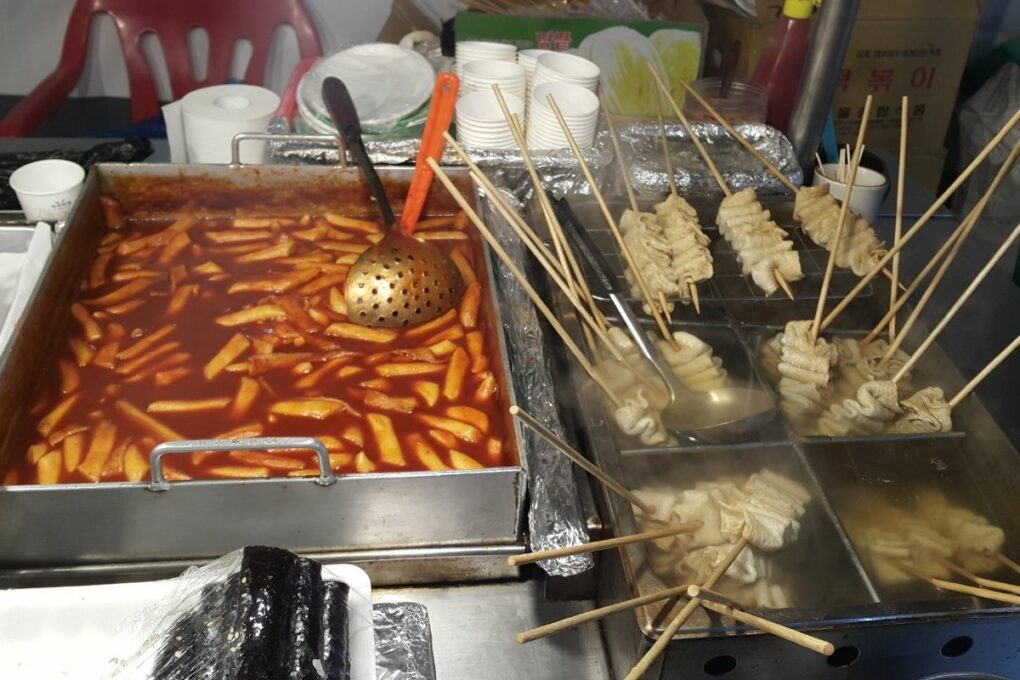
Kimchi jjigae (김치찌개)
Drinking on an empty stomach is not a good idea, but sometimes we still do it. When that leads to an upset stomach, kimchi stew is the best solution for that problem. It’s also delightfully mild and salty - which makes it all the more flavorful. It tastes even better with rice, tuna, or meat added in.
Pajeon (파전)
Have you ever tried Korean vegetable pancakes? This is a delicious option for those who like scallions and shy away from meat. Even those who are not big fans of vegetables often share a big plate of pajeon when drinking, because it’s a form of comfort food for many Koreans, especially on days that make you want to drink soju with friends.
Maeuntang (매운탕)
eople who sell their wares at Noryangjin Seafood Market in Seoul are often spotted with a bowl of maeuntang after a long day of fishing. The fish used for this dish is best enjoyed fresh, and as a result, maeuntang tends to have an overpowering taste that older locals commonly enjoy with soju.
Jokbal (족발)
Another typical Korean dish that goes well with soju is the infamous jokbal, or pig’s feet. It may be a bit on the pricey side, but it’s savory and meaty, and comes with various sauces to keep the taste interesting.
Jokbal is always thoroughly spiced and served on your table hot, making it easy to overeat, so the purpose of soju is to slow you down from gobbling everything up and focus instead on socializing.
Samgyeopsal (삼겹살)
One of the surprising things about Korea is that meat is quite expensive by itself, but if you gather friends and stop by a Korean BBQ place with samgyeopsal (pork belly), then you’re in for an affordable treat.
In some parts of Seoul, these restaurants also offer muhan refill which means that for the same flat fee, you can order unlimited pork. This does not apply to soju, but if you’re with Koreans, expect the drinks to keep coming and split the tab at the end!
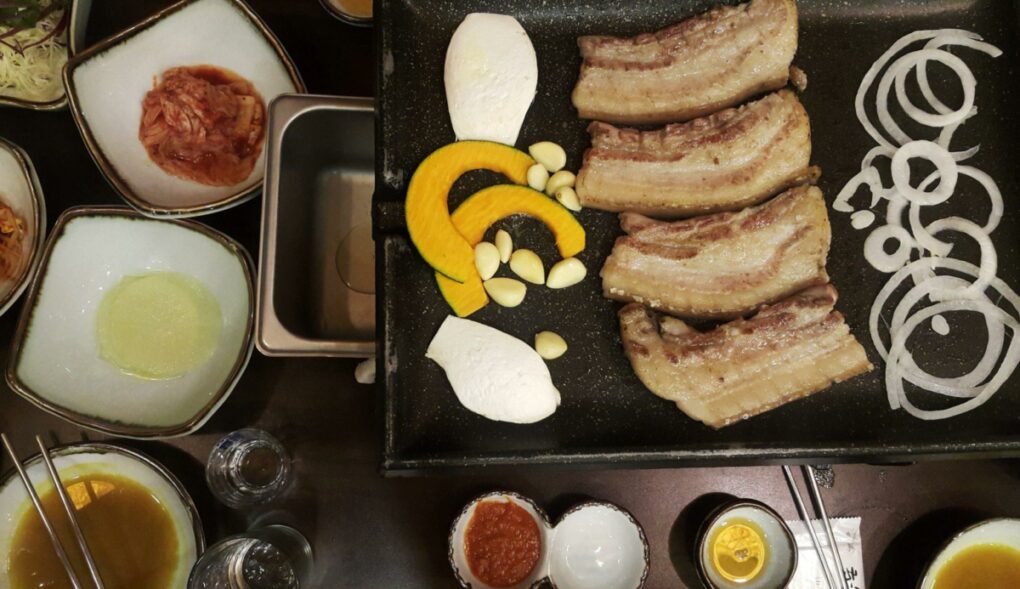
International Cuisine
With the rise of soju’s popularity worldwide, it has also become increasingly popular to pair this versatile drink with international dishes, such as:
- Pizza
The greasy taste of pizza definitely goes well with the clean taste of soju - especially pizza topped with lots of meat and cheese! - Tacos
Tacos and soju seem like an unthinkable duo - but hear me out. Hearty tacos full of veg, meat, and salsa taste great with soju because it helps enhance the flavor of all three, not to mention complement the spices. - Sushi
Pairing sushi with soju feels like eating luxury kimbap, especially if your platter has nigirizushi and sashimi. Soju really brings out the taste of fish or shellfish— and wasabi, if you dare. - Sisig
If you are not familiar with Filipino sisig, then you should learn how to make it. Sisig comes from the good parts of a pig’s head (cheeks, snout, and ears) plus its liver and belly, chopped in small pieces before frying. It’s a spicy and sour treat that pairs extremely well with the light, clean taste of soju.
These soju food pairings provide a unique, contrasting flavor experience that helps to highlight the refreshing nature of soju (as long as you can handle the burn at the end). As most soju is relatively lower in alcohol content compared to other spirits, it can also be enjoyed shot-for-shot much longer than other liquors.
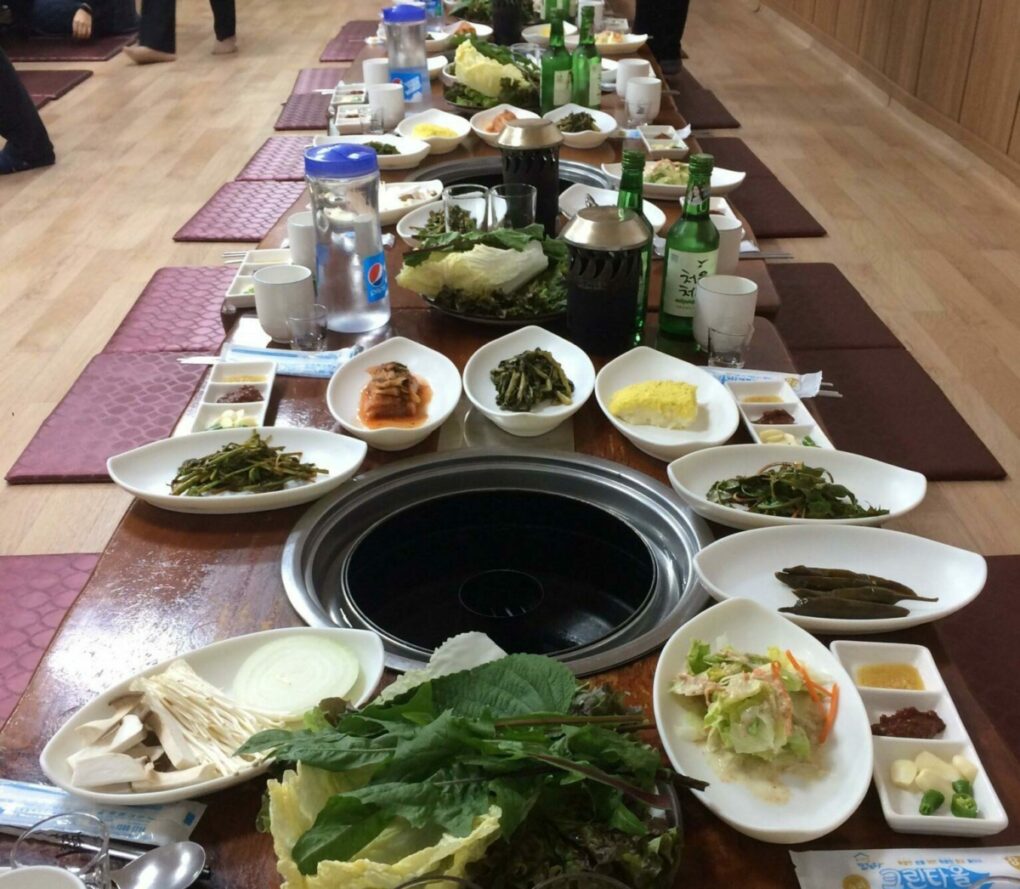
Popular Soju Brands Internationally
Soju is gaining popularity in other parts of the world, and for good reasons. Whenever foreigners come to Korea, they often know two things: soju is very popular, and it’s cheaper than water.
In fact, its affordability is exactly why you can enjoy local food even more, giving you more bang for your buck at Korean barbeque. You can even mix it with other drinks like beer or soda, and even put it inside fruits like watermelon (subak soju).
But what makes soju really enticing for foreigners is that it’s a way to actually get to know the local experience. Going to places where soju is readily available lets you feel what it’s like to eat like a local, and if you (or they) are not too shy, bond and get to know them even more.
Jinro
Did you know that Jinro has maintained its reputation as the best soju in Korea since its launch in 1924? As one of the best-selling soju brands in the world, Jinro is an iconic brand both in South Korea and abroad.
Based in Seoul, its flagship products, Chamisul Fresh and Chamisul Original, are known for their clean, light, and crisp taste. For these reasons Jinro has achieved international recognition, and its soju has become a staple in many Korean homes.
Chum Churum
Chum Churum may not be as famous as Jinro, but locals like it just as much. Its name translates to “like the first time,” and is meant to imply purity, because it’s made with alkaline water, which makes the feel of the drink smoother than most soju. It also leaves a light, clean taste, similar to a lightly-sweetened water.
Good Day
Just like its name, drinking this soju will definitely make it a “good day” (or night, for that matter). Most of the best flavored sojus comes from this brand, especially the tropical fruit flavors. Moreover, their pomegranate soju even won an award at an international beverage event recently, merely solidifying its spot.

Popular Soju Brands Domestically
Ask a Korean to name a drink, and they will almost automatically say soju. Locals love this beverage to the point the government dubbed it as their national drink. Beloved celebrities like the “nation’s little sister” IU and the “nation’s first love” Suzy have served as brand ambassadors for Chamisul and Chum Churum, respectively.
C1 Blue
C1 Blue is a premium soju brand that’s quickly gaining popularity in South Korea. Known for its smooth and clean taste, C1 Blue utilizes natural bedrock water and a high-quality filtration process to achieve its refined and crisp flavor.
Domestically this brand appeals to those who seek a more modern and sophisticated soju experience.
Joeunday Fresh
Joeunday Fresh is another popular domestic soju brand that emphasizes its refreshing taste. The name is a Konglish mish-mash of ‘good’ in korean (joeun) and the English ‘day.’
Also known for its use of natural ingredients, Joeunday Fresh boasts a clean and smooth flavor profile that makes it perfect for enjoying with meals, particularly spicy Korean dishes.
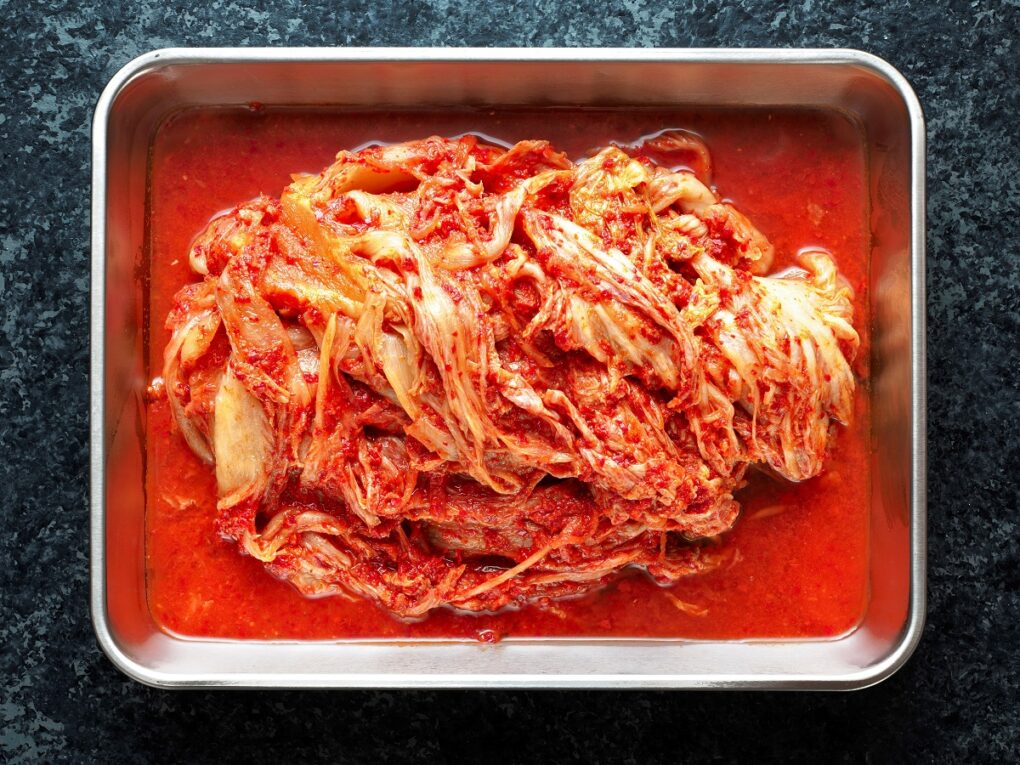
Kumbokju Daesoju
A classic soju brand, Kumbokju Daesoju has a strong presence in the domestic market. This soju is made using an authentic and time-honored Korean brewing method, which results in a rich and robust flavor. Kumbokju Daesoju is a popular option for those seeking a more traditional Korean soju experience.
Andong Soju
Originating from the Andong region of South Korea, Andong Soju is a premium brand known for its distinctive taste and higher alcohol content. This soju is made using traditional techniques and its unique flavor is derived from a light blend of herbs and other natural ingredients.
Andong Soju is often enjoyed by those who appreciate a stronger and more complex soju experience.
Charm Soju
Charm Soju is a popular domestic brand that offers a smooth and refreshing taste. It’s not particularly distinct, but in the case of soju, this is generally a good thing. Its approachable taste and easy-drinking nature make it a popular choice for casual soju drinkers.



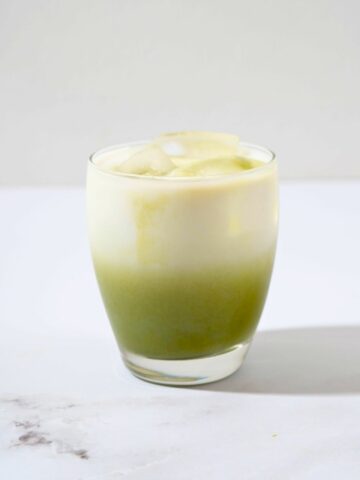
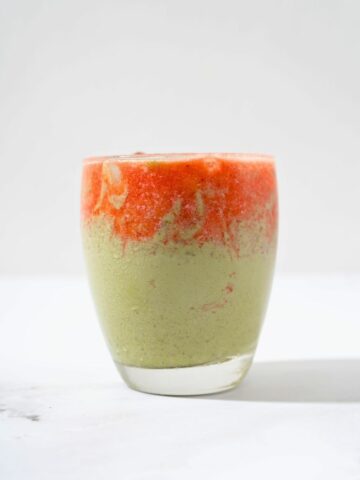
Comments
No Comments